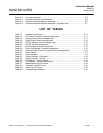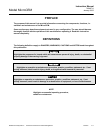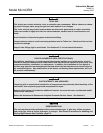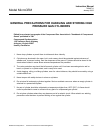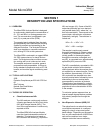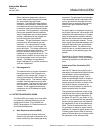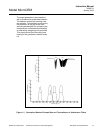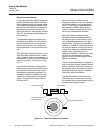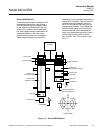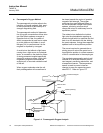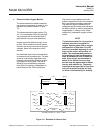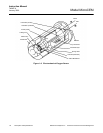
Instruction Manual
748467-A
January 2002
Rosemount Analytical Inc. A Division of Emerson Process Management Description and Specifications 1-1
Model MicroCEM
SECTION 1
DESCRIPTION AND SPECIFICATIONS
1-1 OVERVIEW
The MicroCEM Analyzer Module is designed
to continuously determine the concentration of
O
2
, CO, and NOx in a flowing gaseous mix-
ture. The concentration is expressed in per-
cent (%) or parts-per-million (PPM).
The sampled gas is collected from the stack
and prepared by the Probe/Sample Handling
System for analysis and processing by the
Analysis Enclosure. The Analysis Enclosure
shall be a standalone, computer-controlled
unit, utilizing PC/104 as the system bus.
The MicroCEM is enclosed in a rugged NEMA
4X, IP65 type enclosure, for harsh environ-
ment. The analysis enclosure utilizes convec-
tion cooling with no air intake and air vents.
The analysis enclosure is modular, general
purpose and easily expandable. It utilizes in-
dustry standard components such as PC/104
boards, and modular signal conditioning mod-
ules.
1-2 TYPICAL APPLICATIONS
SCR
Emission Compliance per EPA 40 CFR Part
60
Gas Turbines
Natural Gas Fired Boilers
Process Heaters
1-3 THEORY OF OPERATION
a. Chemiluminescense NO
X
The NOx analyzer continuously analyzes
a flowing gas sample for NOx [nitric oxide
(NO) plus nitrogen dioxide (NO
2
)]. The
sum of the concentrations is continuously
reported as NOx.
The MicroCEM NOx Analyzer Module
uses the chemiluminescense method of
detection. This technology is based on
NO’s reaction with ozone (O
3
) to produce
NO
2
and oxygen (O
2
). Some of the NO
2
molecules produced are in an electroni-
cally excited state (NO
2
* where the * re-
fers to the excitation). These revert to the
ground state, with emission of photons
(essentially, red light). The reactions in-
volved are:
NO
2
+ O
3
→ NO
2
* + O
2
NO
2
* → NO
2
+ red light
The sample is continuously passed
through a heated bed of vitreous carbon,
in which NO
2
is reduced to NO. Any NO
initially present in the sample passes
through the converter unchanged, and
any NO
2
is converted to an approximately
equivalent (95%) amount of NO.
The NO is quantitatively converted to NO
2
by gas-phase oxidation with molecular
ozone produced within the analyzer form
air supplied by an external source. During
the reaction, approximately 10% of the
NO
2
molecules are elevated to an elec-
tronically excited state, followed by imme-
diate decay to the non-excited state,
accompanied by emission of photons.
These photons are detected by a photo-
multiplier tube which produces an output
proportional to the concentration of NOx
in the sample.
To minimize system response time, an
internal sample bypass feature provides
high-velocity sample flow through the
analyzer.
b. Non-Dispersive Infrared (NDIR) CO
The optical bench can selectively meas-
ure multiple components in a compact
design by using a unique dual optical
bench design. Depending on the applica-
tion, any two combinations of NDIR chan-
nels can be combined on a single
chopper motor/dual source assembly.



